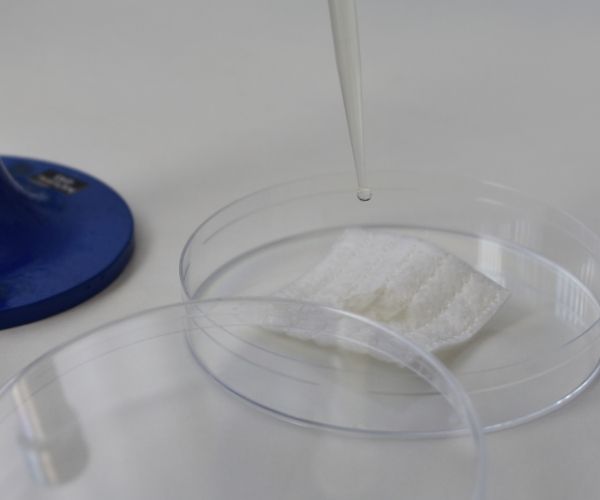The AATCC Test Method 100 was originally written to test for antibacterial activity of textiles but a modified version is now the gold standard for demonstrating antimicrobial activity of wound dressings, particularly for submission to the FDA. For regulatory submission, a preconditioning step with a high protein solution is usually required before inoculation. This time period will reflect the wear time of the dressing. Both the test and control samples are inoculated and the control samples are recovered immediately into neutraliser. The quantity of viable organisms recovered from the test sample after incubation is compared to the control at time zero.
For a full antimicrobial claim, 3 Gram-positive, 3 Gram-negative, one yeast and one mould should be tested. Test organisms should be wound-relevant. For initial screening, one Gram-positive and one Gram-negative can be tested. Contact us to discuss suitable strains and how we can support you through your screening or submission process.
- Required organisms: for an antibacterial claim, 3 Gram-positive and 3 Gram-negative bacterial species should be tested. For an antifungal claim, one fungal species should be tested in addition. For the full antimicrobial claim, all of the above plus one mould.
- Sample requirements: a non-active control is required alongside the antimicrobial dressing (sterile)
- Contact time: Dependent on recommended wear time of dressing. This may include a preconditioning step
- End point: Colony counts
- Efficacy: ≥ 4 Log reduction for FDA submission
